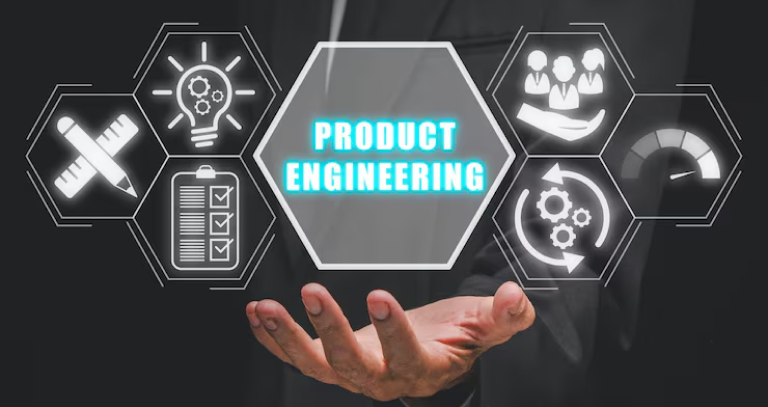How to Develop a LIMS System for Small Laboratories
Ditstek Blogs
Running a small laboratory requires managing samples, tracking data, meeting compliance standards, and keeping everything running smoothly and all without a massive budget or additional staff. Off-the-shelf software might promise a quick fix, but often ends up forcing your unique processes into rigid molds that don’t quite fit. Ready made software comes with limited features, leading to wasted time, increased errors, and slower growth.
At the same time, savvy investors and software developers recognize a real opportunity in custom-built Lab Information Management Systems designed specifically for small labs. Custom software solutions are not only scalable, adaptable but also create new business opportunities.
If you’re deciding whether to invest in or build a custom LIMS, this blog breaks down everything you need to know, from defining your requirements to navigating development challenges.
What Is a LIMS?
A Lab Information Management System (LIMS) streamline core operations like how labs handle data, samples, and workflows. It is a digital backbone that keeps everything organized, accurate, and accessible.
Unlike generic data management tools, a custom LIMS is built specifically for laboratory environments. It tracks samples from collection to disposal, manages test results, ensures compliance with industry standards, and often integrates with lab instruments and equipment. The goal is to streamline operations, cut down on human errors, and accelerate processes that typically drain time and resources.
For small labs, a good LIMS can be the difference between chaos and order. It helps labs stay efficient, maintain data integrity, and generate reliable reports without drowning in spreadsheets or paperwork.
In short, LIMS brings order to the complexity of lab operations, making life easier for everyone involved.
Build a Custom LIMS Today!
Start designing a LIMS system tailored to your lab’s size, workflow, and compliance needs. Our experts will guide you through every step.
Why LIMS is Essential for Small Labs
Missed deadlines, lost samples, compliance issues, or unhappy clients are the common concerns of small labs. It all happens due to limited resources and smaller teams. That’s where a custom LIMS becomes essential for small labs.
A well-built LIMS gives small labs the structure they need without slowing them down. It automates repetitive tasks, tracks every sample with precision, keeps data centralized and audit-ready, and makes reporting faster and more reliable. No more juggling spreadsheets, chasing paperwork, or second-guessing results.
Why Most Off-the-Shelf LIMS Fall Short in Small Labs
Ready-made LIMS solutions are built for the masses, not for your lab. That means you may end up with features your facility may not use, limited flexibility, and rigid workflows.
Customization, if it’s even available, usually comes at a high cost, both in time and budget. Integrations with existing lab instruments or third-party tools are often limited or require workarounds. As your processes evolve, the software may struggle to keep up.
There’s also the challenge of user experience. Smaller labs typically don’t have full-time IT staff to manage and maintain complicated systems. Off-the-shelf solutions can become more of a burden than a benefit if they’re not intuitive or scalable.
In contrast, a custom LIMS is built around how your lab actually operates.
How to Develop a Custom LIMS for Small Laboratories

Developing a custom Lab Information Management System is a smart business move. Whether you're a small lab looking to streamline operations or an entrepreneur building a niche SaaS for the lab industry, your development approach will decide if your LIMS delivers real value or ends up underused and overpriced.
1. Start with Real-World Lab Insight
Don’t begin with features. Begin with workflows. Understand how samples move through the lab, where delays happen, and which processes are still manual or error-prone. This clarity sets the foundation for a system that reflects how labs actually operate because a LIMS only works if it fits seamlessly into existing routines.
2. Define the Minimum Viable Scope
Skip the temptation to overbuild. Identify the essential features your system must deliver from day one like sample tracking, user roles, test result management, audit logs, reporting., If you're building a product to resell, this becomes your MVP: lean, functional, and ready to prove market fit.
3. Choose a Development Model That Fits Your Vision
Will this be an in-house project managed by your tech team, or are you partnering with a offshore software development firm that specializes in lab systems? Your model impacts cost, timelines, and flexibility. If you're aiming for SaaS, you’ll also need a long-term roadmap like user onboarding, multi-tenancy, usage tracking, billing modules.
4. Design a Workflow-First UI/UX
Small labs need speed, not complexity. The interface must reflect the actual steps lab technicians follow like log samples, assign tests, view status, generate reports.
5. Pick a Scalable, Lab-Friendly Tech Stack
Tech stack matters. Choose frameworks and databases that support scale, flexibility, and future integrations. Whether you're planning to run the system in-house or commercialize it, a clean architecture ensures you’re not rebuilding things six months down the line.
6. Build Modular Architecture with Future Expansion in Mind
A modular architecture allows you to scale features independently whether it's adding analytics dashboards, integrating instruments, or rolling out multi-lab support later. For investors, this means a product that can grow with your market without starting from scratch every time.
7. Prioritize Compliance and Security from Day One
LIMS solutions operate in regulated environments. FDA 21 CFR Part 11, HIPAA, ISO standards, they’re not optional. Ensure compliance and data protection into the system. This builds trust with customers if you're launching a product.
8. Focus on Smart Integrations
Labs already use equipment and software from barcode printers to testing machines. A custom LIMS that can’t connect to them creates more problems than it solves. Make sure your system can speak to other tools whether through APIs, middleware, or custom connectors.
9. Validate With Real Users
Before full rollout, test it in an actual lab environment. Collect feedback, refine usability, resolve edge cases. If you're planning to commercialize it, this becomes your live proof of concept and a powerful pitch for future customers or investors.
10. Roll Out With Training and Support
Custom software solution Canada is only valuable if it’s used properly. Provide lab-specific onboarding, role-based documentation, and responsive support. If you’re launching this as a product, great support becomes a core part of your value proposition.
Need a Scalable LIMS Solution?
Get a lightweight, cost-effective LIMS system built for small labs. Designed to scale as your lab grows and evolves.
Key Features a Small Lab Actually Needs in a LIMS

Small labs need clarity, control, and speed. Here’s a list of key features a small lab needs:
| Sample Tracking | Every sample should have a clear trail, when it came in, who handled it, what tests were performed, and where it is now. |
| Role-Based Access Controls | Not everyone needs access to everything. Your LIMS should let you assign roles for lab technician, lab manager, quality officer, each with the right level of access. It keeps data secure and workflows clean. |
| Real-Time Test Status & Updates | Whether it’s internal teams or clients asking, “Where are the results?”, a quick dashboard view should answer that. No more back-and-forth emails or chasing paperwork. |
| Automated Report Generation | A LIMS should generate structured, professional reports with just a few clicks also customizable if needed, but fast and consistent. |
| Alerts and Notifications | Set up alerts so the right people know, at the right time. |
| Instrument & Barcode Integration | Your LIMS should talk to your lab equipment. Or at least import/export data easily. Barcode scanning to tag samples, auto-uploading results from instruments is where time is saved and errors are avoided. |
| Audit Trail & Logs | Every edit, every action—logged. Not for micromanagement, but for compliance. If you ever need to retrace steps or face an audit, your LIMS should have your back. |
| Simple, Clean User Interface | No one in a small lab has time to wrestle with complex software. The interface should be intuitively built for busy people who need answers fast, not endless menus. |
| Scalable Architecture | Even small labs grow. Your LIMS should grow with you whether that’s more users, more tests, more locations, or even turning it into a product you license. |
What Does It Cost to Build a Custom LIMS?

The cost depends on what you're building, who you're building it with, and how much complexity you're adding. A lean internal LIMS can start around $20K, while a market-ready SaaS version will go higher especially if you need compliance, integrations, or advanced user roles.
Here’s a quick snapshot of the major cost factors:
| Cost Driver | Estimated Range |
| Feature Set & Workflow Depth | $20K–$40K (basic) |
| Integrations (devices/APIs) | $5K–$15K+ |
| Compliance (HIPAA, ISO, etc.) | $10K–$25K |
| UI/UX Design | $5K–$12K |
| Development Partner | Varies widely |
| Ongoing Maintenance | 15–25% annually |
Get a LIMS That Fits Your Budget!
Stop overpaying for oversized systems. We’ll help you develop a LIMS that fits your lab’s exact requirements.
How We Help Labs Build Custom LIMS Solutions

Here’s how we help you build a LIMS that’s actually worth using (and investing in):
We listen first: Every lab runs differently. Some still use paper logs. Others juggle Excel, email, and half-integrated tools. We begin by understanding your workflow, your team, and where inefficiencies or gaps are costing you time and accuracy.
We design for actual usage: We design your LIMS around the real work happening in your lab like logging samples, tracking test progress, generating reports, and staying compliant. This saves time, avoids errors, and keeps things moving.
We build what you need: If all you need right now is basic tracking and reporting, we won’t push a giant suite on you. But if you’re planning to scale or productize, we’ll build the foundation with that in mind that is modular, flexible, and ready to grow.
We integrate with what you already use: We build LIMS that connect with lab instruments, barcode scanners, billing software, and external databases so data flows where it should, without extra work.
We focus on compliance: HIPAA, CLIA, ISO, 21 CFR Part 11 can halt operations if missed. We help you meet the necessary standards from day one, with secure access, audit trails, and data protection built into the system.
We work with both lab operators and SaaS founders: Whether you’re building a LIMS for internal use or planning to sell it as a product, we get the difference. If you’re commercializing, we’ll help you think beyond features like multi-tenancy, user onboarding, usage tracking, billing, support modules.
And we stick around: Post-launch, we stay involved for iterations, updates, and ongoing support. We build a long-term partnership to help your system evolve with your lab or your business.
Frequently Asked Questions
1. How long does it take to build a custom LIMS?
For a basic MVP, it can take 8–12 weeks whereas a feature-rich or SaaS-ready version may need 4–6 months, depending on scope, integrations, and compliance requirements.
2. Can you integrate with our existing lab equipment and tools?
Yes. We build LIMS that connect with barcode scanners, analyzers, billing tools, CRMs, and external databases via APIs or device-level integration.
3. What if our lab has very specific workflows?
That’s exactly why custom LIMS works best. We tailor the system to match your process.
4. Is it possible to make the LIMS multi-tenant for SaaS use?
Absolutely. If you're building a product to resell, we structure it for multi-tenancy, user management, billing, and future scaling from the ground up.
5. Do you offer post-launch support and updates?
Yes. We offer flexible support packages for feature updates, enhancements, security patches, and technical troubleshooting.
6. How secure is a custom LIMS?
We follow best practices for HIPAA, ISO, FDA, and other standards using encrypted data handling, role-based access, audit trails, and secure hosting protocols.
7. Will our team need training?
We design intuitive interfaces, but we also offer training sessions, user manuals, and walkthroughs so your team is confident from day one.

Nidhi Thakur
With more than 19 years of experience - I represent a team of professionals that specializes in the healthcare and business and workflow automation domains. The team consists of experienced full-stack developers supported by senior system analysts who have developed multiple bespoke applications for Healthcare, Business Automation, Retail, IOT, Ed-tech domains for startups and Enterprise Level clients.
Recent Posts
Get in touch










